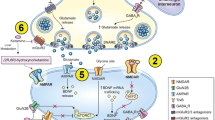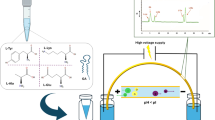Abstract
The compound studied, an antagonist of corticotropin-releasing factor (CRF) receptor 1, was under development for the treatment of major depressive disorder and generalized anxiety disorder. To control the quality of intermediate compounds in the synthetic pathway, the preference is to develop a single HPLC method that could determine impurities of the sequential and structurally similar intermediates. However, the chemical nature of one of those intermediates, Compound C, posed a number of challenges to the development of a suitably rugged impurity method for this isolated intermediate. In the solid state, Compound C is a stable mixture of its trans-isomer and semicarbazone forms. In most solution states, Compound C interchanges between the trans and semicarbazone forms as well as degrades rapidly to impurity X, resulting in sample solution instability. Furthermore, the trans-isomers and semicarbazone exhibited different UV response factors, but reference standards of the two forms were not available to determine the relative response factor. Consequently, irreproducibility was observed during the HPLC analysis when conventional UV detection was applied directly. This article describes the following approaches that were employed to meet these challenges: (1) diluent screening was performed to select a \solvent that afforded adequate sample solution stability; (2) appropriate chromatographic conditions were selected to eliminate or minimize any on-column degradation; (3) alternate HPLC detection, Corona charged aerosol detection, in conjunction with UV analysis, was used to determine relative amounts of the isomeric forms which subsequently permitted the use of conventional UV detection for routine analysis. The validation data of this reversed-phase liquid chromatographic method are also discussed.








Similar content being viewed by others
References
Gilligan P, Clarke T, Qe L, Lelas S, Li Y, Heman K, et al. J Med Chem. 2009;52:3084–92.
Vervoort N, Daemen D, Torok G. J Chromatogr A. 2008;1189:92–100.
Dixon RW, Peterson DS. Anal Chem. 2002;74:2930–7.
Lane S, Boughtflower B, Mutton I, Paterson C, Farrant D, Taylor N, et al. Anal Chem. 2005;77:4354–65.
Gamach PH, McCarthy RS, Freeto SM, Asa DJ, Woodcock MJ, Laws K, et al. LC GC. 2005;23:516–20.
Teutenberg T, Tuerk J, Holzhauser M, Kiffmeyer TK. J Chromatogr A. 2006;1119:197–201.
Cascone A, Eerola S, Ritieni A, Rizzo A. J Chromatogr A. 2006;1120:211–20.
Forsatz B, Snow NH. LC GC. 2007;25:960–8.
Hazotte A, Libong D, Matoga M, Chaminade P. J Chromatogr A. 2007;1170:52–61.
Sun P, Wang X, Alquier L, Maryanof CA. J Chromatogr A. 2008;1177:77–87.
Author information
Authors and Affiliations
Corresponding author
Rights and permissions
About this article
Cite this article
Huang, Z., Neverovitch, M., Lozano, R. et al. Development of a Reversed-Phase HPLC Impurity Method for a UV Variable Isomeric Mixture of a CRF Drug Substance Intermediate with the Assistance of Corona CAD. J Pharm Innov 6, 115–123 (2011). https://doi.org/10.1007/s12247-011-9105-7
Published:
Issue Date:
DOI: https://doi.org/10.1007/s12247-011-9105-7




